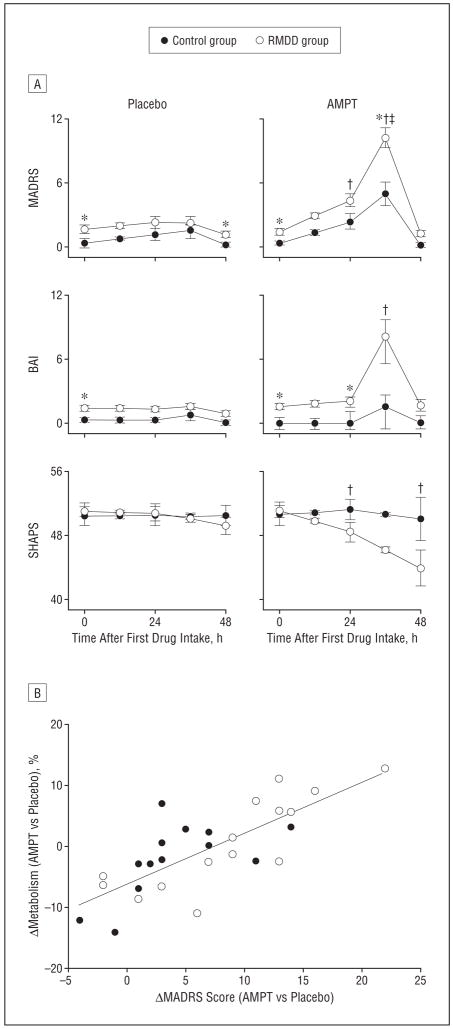Figure 1.
Behavioral response to catecholamine depletion and relationship to brain metabolism in the ventromedial prefrontal cortex. A, Behavioral response to catecholamine depletion with α-methylparatyrosine (AMPT) and placebo in unmedicated subjects with major depressive disorder in remission (RMDD subjects) and healthy control subjects. BAI indicates Beck Anxiety Inventory; MADRS, Montgomery-Asberg Depression Rating Scale; and SHAPS, Snaith-Hamilton Pleasure Scale. *Significant diagnosis effect (RMDD subjects vs controls, P<.05). †Significant treatment effect for RMDD subjects. ‡Significant treatment effect for controls. B, Positive relationship between AMPT-induced changes in normalized metabolism (regional/global cerebral metabolic rates for glucose) in the ventromedial frontal polar cortex (at x=−4, y=54, z=−8) and the corresponding changes in depressive symptoms (r=0.77, P<.001). The difference between the within-session MADRS score change for each subject in the AMPT session vs the placebo session was calculated to reflect the magnitude of the AMPT-induced effect on depression ratings. The regression line (determined from the Pearson correlation coefficient) represents regression on data from RMDD subjects and control subjects together (N=28).

